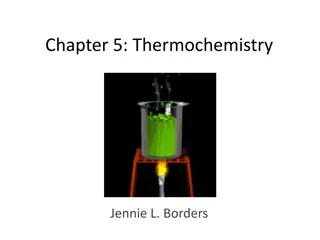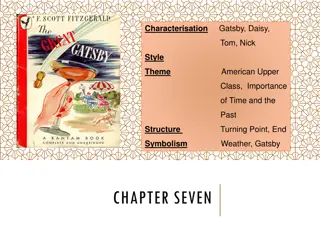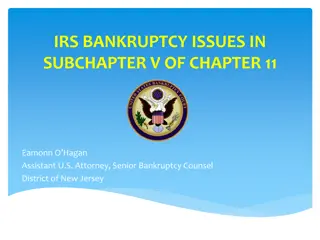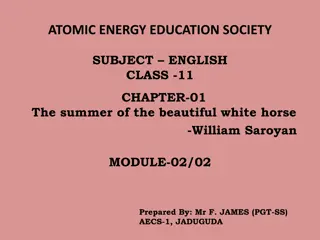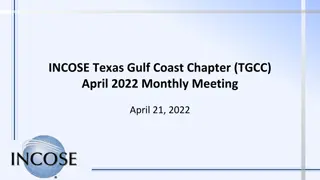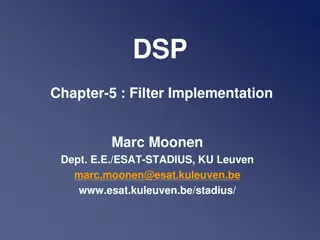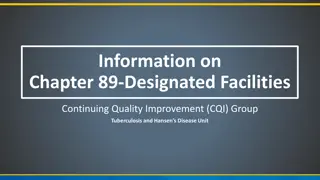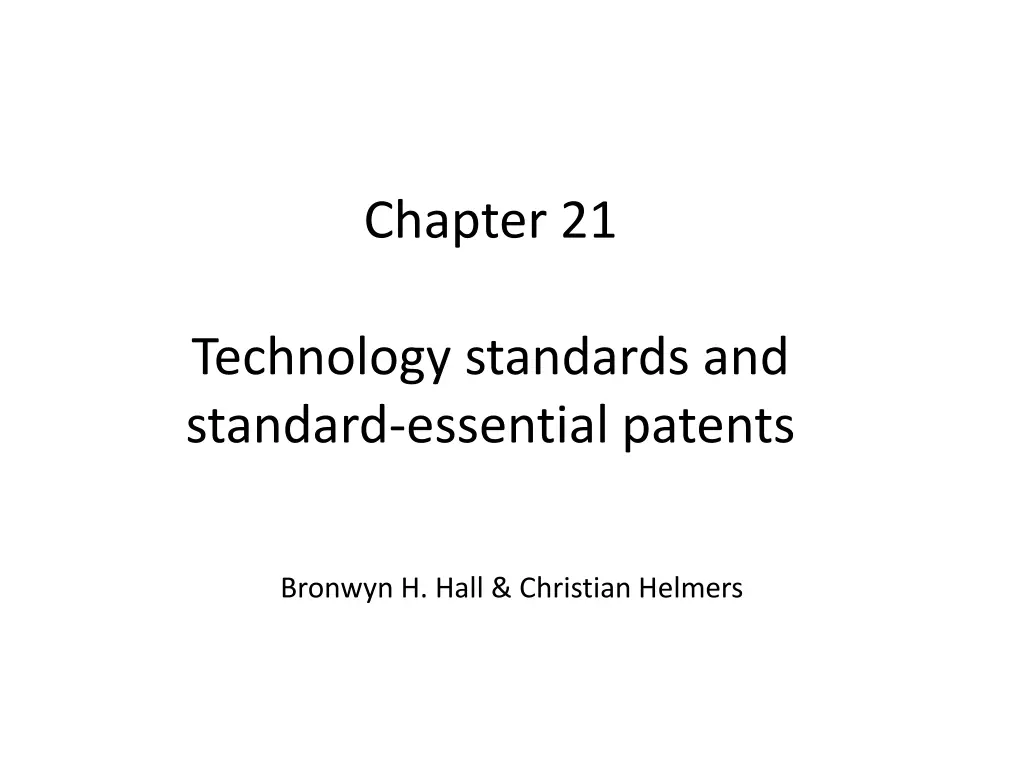
Technology Standards and Standard-Essential Patents Overview
Explore the complexities of technology standards, standard-essential patents (SEPs), and FRAND licensing. Learn about RFID technology, interoperability, and the importance of standards in modern economies. Understand the role of patents in standard creation and the market power they can confer to owners of SEPs.
Download Presentation

Please find below an Image/Link to download the presentation.
The content on the website is provided AS IS for your information and personal use only. It may not be sold, licensed, or shared on other websites without obtaining consent from the author. If you encounter any issues during the download, it is possible that the publisher has removed the file from their server.
You are allowed to download the files provided on this website for personal or commercial use, subject to the condition that they are used lawfully. All files are the property of their respective owners.
The content on the website is provided AS IS for your information and personal use only. It may not be sold, licensed, or shared on other websites without obtaining consent from the author.
E N D
Presentation Transcript
Chapter 21 Technology standards and standard-essential patents Bronwyn H. Hall & Christian Helmers
Overview Introduction: technology standards, standard essential patents (SEPs), and FRAND licensing Characteristics of SEPs and Standard Setting Organizations (SSOs) Patent hold-up Royalty stacking Patent hold-out FRAND and the computation of SEP licensing rates legal and policy debates 2024 Hall & Helmers Ch. 21 2
Introduction Radio-frequency identification (RFID): wireless communication that relies on radio waves to transmit digital data. Data stored on microchip tags, which allow identifying, tracking and monitoring objects they are attached to in real time. RFID tags have significant advantages over barcodes and widely seen as core technology that enables Internet of Things (IoT). Passive tags in the ultra-high frequency (UHF) band are cheap, less than US$ 0.05 per unit. Widely used across many industries, including retail, manufacturing, logistics, and life sciences. 2024 Hall & Helmers Ch. 21 3
Introduction Technologies such as RFID tags require interoperability to exchange data with other devices. Interoperability is enabled by technology standards. Different standards apply to RFID tags: ISO/IEC 18000-63:2015 has goal to allow for compatibility and to encourage inter-operability of products for the growing RFID market in the international marketplace. GS1 s Electronic Product Code (EPC) Gen2v2 air interface standard, which defines the physical and logical requirements for an RFID system. Modern communication technologies are governed by multiple technology standards developed and administered by different SSOs. Many different products implement these technologies, they all need to comply with relevant technology standards. 2024 Hall & Helmers Ch. 21 4
Introduction Technology standards ubiquitous in modern economies, especially in information and communication technologies (ICT). Examples of ICT standards: WiFi, Bluetooth, GPS, LTE, and 5G. Standards crucial for enabling interoperability between diverse technologies, components, and products. 2024 Hall & Helmers Ch. 21 5
Introduction Standard setting process complex and requires coordination among many parties with often competing interests. Most technology standards created through cooperative process, usually promoted, coordinated and organized by a standard setting organization (SSO)/standard development organization (SDO). Technologies that create a standard are often protected by patents. Patents considered essential for a standard: standard essential patents (SEPs). Standards can result in market power for the owners of the relevant SEPs. Absence of substitute sets SEPs apart from patents on technologies that are not part of a standard. 2024 Hall & Helmers Ch. 21 6
Introduction Most SSOs have rules regarding the patenting aspect of the standardization process. Rules regulate how decisions are made about which patents to include in a standard and how that information is disclosed to the public. SSOs usually have specific requirements with respect to licensing to third parties: Royalty-free licensing, e.g. World Wide Web Consortium (W3C). Fair, reasonable, and non-discriminatory (FRAND) terms (in U.S., RAND). 2024 Hall & Helmers Ch. 21 7
Introduction Primary goal of FRAND: facilitate widespread adoption of the standard. SEP owner accepts FRAND commitment in exchange for having patents included in standard. FRAND commitment imposes certain limitations on licensing and obligations on licensor. FRAND licensing still implies that patent owner is entitled to compensation for contribution to standard and additional investments in standard development process. FRAND licensing also imposes obligations on implementer. 2024 Hall & Helmers Ch. 21 8
Introduction Why is there a need for FRAND licensing in the context of SEPs? Answer conceptually straightforward, but extremely difficult in practice. FRAND licensing exists because: SEPs command hold-up power over potential licensees. Fragmentation of ownership of SEPs can lead to royalty stacking. Hold-up and royalty stacking could lead to higher end- user prices, less adoption, and less innovation. But also need to ensure companies that develop technology standards are appropriately compensated. 2024 Hall & Helmers Ch. 21 9
Introduction In practice, uncertainty over: Definition of SEPs. Precise meaning and implications of a FRAND commitment. SEP licensing involves patent, contract and antitrust law. Patent law: monetary damages and injunctive relief. Contract law: specific performance in the form of granting a license under FRAND terms. Antitrust law: remedies against the abuse of market power from technology standards and SEPs. Questions surrounding FRAND licensing have been litigated in courts around the world. Many unresolved questions remain. Increased attention by policy makers and regulators. 2024 Hall & Helmers Ch. 21 10
Technology standards Standards exist in many different areas of the economy. Examples: Standards that apply to freight containers. SWIFT standard for international payments. ISO 9000 quality management standards. Generally Accepted Accounting Principles (GAAP) to harmonize corporate financial reporting. ISO 3166 standard for the use of letter and number codes to refer to countries. Standards are created in different ways: Government-mandated. Individual companies or corporate consortia. SSOs. Patents play no role in many standards. 2024 Hall & Helmers Ch. 21 11
Technology standards Technology standards are set of rules and specifications that a technology has to comply with in order to function. ETSI: a standard is a document, established by consensus and approved by a recognized body, that provides, for common and repeated use, rules, guidelines or characteristics for activities or their results, aimed at the achievement of the optimum degree of order in a given context . In ICT with its complex and modular technologies, standards critical to guarantee interoperability between technologies. Technology standards serve other goals as well, e.g. safety, implement government regulation, etc. 2024 Hall & Helmers Ch. 21 12
SSOs and SEPs SSOs facilitate and organize complex standard setting process: Review proposals by members for technologies to be included in a standard. Approve, publish, and revise standard. Standards themselves are chosen and created by members. Membership and participation in SSOs are voluntary. SSO members include: Upstream companies focused on technology development. Downstream technology implementers. Vertically integrated companies. Many companies participate in different standard setting processes administered by different SSOs. 2024 Hall & Helmers Ch. 21 13
SSOs and SEPs Most SSOs adopt intellectual property rights (IPR) policies that determine two core aspects of SEP ownership and licensing: 1. Disclosure and essentiality 2. Licensing commitments 2024 Hall & Helmers Ch. 21 14
Disclosure and essentiality Some SSOs require disclosure of relevant SEPs. What makes a patent standard essential? No single, uniform definition of essentiality, each SSO has its own. Technological and commercial essentiality: Technological essentiality: there are no technological alternatives to implement technology covered by a standard. ETSI: When it is not possible on technical grounds to make or operate equipment or methods which comply with a standard without infringing a SEP, i.e. without using technologies that are covered by one or more patents, we describe that patent as essential . Commercial essentiality: while technological alternatives may exist, they are commercially less viable. IEEE: Essential Patent Claim shall mean any Patent Claim the practice of which was necessary to implement either a mandatory or optional portion of a normative clause of the IEEE Standard when, at the time of the IEEE Standard's approval, there was no commercially and technically feasible non-infringing alternative implementation method for such mandatory or optional portion of the normative clause. 2024 Hall & Helmers Ch. 21 15
Disclosure and essentiality In practice, determining essentiality is challenging. SSOs generally rely on self-declarations: Specific patents. Blanket disclosures. International dimension to disclosure since often technologies are patented in many countries around the world. ETSI considers as declared SEPs all existing and future members of a patent family if ETSI has been informed of a member of this patent family [ ]. Information on other members of this patent family, if any, may be voluntarily provided. Some SSOs require early or timely disclosure. ETSI s policy states each member shall use its reasonable endeavours, in particular during the development of a standard or technical specification where it participates, to inform ETSI of essential IPRs in a timely fashion. 2024 Hall & Helmers Ch. 21 16
Disclosure and essentiality SSOs do not verify SEP declarations (no penalties for over- or under- declaration). IEEE is not responsible for identifying Essential Patent Claims for which a license may be required, for determining the validity, essentiality, or interpretation of Patents Claims [ ]. Other Essential Patent Claims may exist for which a statement of assurance has not been received. As a result over- and under-declaration potentially common. Over-declaration can result from: Concerns over later being accused of patent ambush. Patents are declared essential before the standard setting process has been finalized. Patent claims tend to change during patent examination. Opportunistic conduct. e.g., for SEPs declared to ETSI on the LTE standard, only a third of declared SEPs considered essential by experts that performed an independent technical evaluation of each individual patent (Stitzing et al., 2018). 2024 Hall & Helmers Ch. 21 17
Licensing commitments SSOs often impose specific licensing requirements on SEP owners. Require owners of disclosed SEPs to submit a licensing declaration Members voluntarily make licensing declarations. Standard requirements concerning licensing terms: FRAND Maximum royalty Royalty-free Non-royalty terms (e.g. grant-back clauses) 2024 Hall & Helmers Ch. 21 18
Licensing commitments Licensing commitments generally public and irrevocable. ETSI requires [d]isclosure of SEP holders are requested to provide an irrevocable undertaking in writing that they are prepared to grant irrevocable licenses on FRAND terms and conditions. SSOs do not specify royalty rate that corresponds to FRAND. ISO/IEC/ITU common patent policy states that [t]he detailed arrangements arising from patents (licensing, royalties, etc.) are left to the parties concerned, as these arrangements might differ from case to case. Licensing commitments are usually attached to SEPs and travel with SEPs if they are transferred. ETSI states that FRAND licensing undertakings [ ] shall be interpreted as encumbrances that bind all successors-in-interest. 2024 Hall & Helmers Ch. 21 19
Whats so special about SEPs? In 2010 Microsoft sued Motorola for breach of contract: Microsoft alleged that Motorola had breached its obligations to license its SEPs under FRAND terms. Motorola had requested a royalty payment of 2.25% of end-user s sales price of Microsoft s standard compliant products including the Xbox, PCs, laptops, and smartphones. Motorola counterclaimed infringement of its SEP portfolios covering Advanced Video Coding (AVC) standard H.264 and local area network (LAN) standard IEEE 802.11 and requested an injunction to stop Microsoft from selling the infringing products in the U.S. Motorola also filed patent infringement action in Germany, where Microsoft s European distribution center was located. Was Motorola s request of a 2.25% royalty on the final purchase price of Microsoft s end-user products consistent with its FRAND commitment? Should Motorola be able to obtain an injunction against Microsoft if Microsoft disagrees with the royalty requested by Motorola? 2024 Hall & Helmers Ch. 21 20
Hold-up Assume there are two parties: Upstream firm; Downstream firm that uses the technology of the upstream firm in its products. If downstream firm makes a relationship-specific investment, the upstream firm has an incentive to exploit the investment. Before downstream firm makes investment, negotiates contract with upstream firm over the technology. If contract not perfect, the upstream firm will re-negotiate the contract after the downstream firm has made its sunk investment. Since investment is sunk, downstream firm can no longer use it when bargaining with upstream firm. Allows upstream firm to obtain larger share of surplus generated by downstream firm than in the negotiation before investment was made. 2024 Hall & Helmers Ch. 21 21
Patent hold-up Simple model that illustrates application to SEPs (Lemley and Shapiro, 2007): Assume SEP owner and alleged infringer who negotiate SEP license. Relevant parameters: V: value per unit of patented feature to the implementer compared to next best alternative. M:implementer s mark-up defined as sales price minus marginal costs per unit. : probability that patent valid and infringed if litigated. known to both parties. C: cost to the implementer of redesigning its product to avoid patent infringement, as a share of value. L:fraction of the implementer s total sales that would be lost if patent owner obtained an injunction and forced implementer to stop selling. B:parties bargaining power. 2024 Hall & Helmers Ch. 21 22
Patent hold-up Royalty R that results from bargaining: R = B V Assume = 1, B = 0.5, V = $1. Benchmark royalty: R = 0.5 1 $1 = $0.50. Assume implementer has created a product that relies on SEP. Patent owner is suing implementer for patent infringement. Litigation changes royalty the implementer is willing to pay. To see this, compute difference between benchmark royalty and what implementer will agree to pay in litigation: ? +? ? ? ? 2024 Hall & Helmers Ch. 21 23
Patent hold-up Assume M = $10 and V = $1: ? ? =$10 $1 = 9 ? $1 Assume L = 0.1: ? ? Assume C = 0.2, then 0.2 + 0.9 = 1.1 Implementer willing to pay more than twice the benchmark royalty. Difference entirely due to cost to implementer of an injunction. Value depends strongly on difference between implementer s mark-up and value of patented feature. L = 9 0.1 = 0.9 ? 2024 Hall & Helmers Ch. 21 24
Patent hold-up In model, hold-up arises because of patent owner s ability to obtain an injunction. Broader view of hold-up includes any conduct that is motivated by ability to enjoin unlicensed use through litigation. This type of conduct allows patent owner to obtain royalties that exceed what the licensee would be willing to pay in its absence. While theory is clear, establishing empirically existence of hold-up extremely difficult: If companies understand risk of hold-up, they will avoid or mitigate it before it occurs. Establishing the benchmark royalty in practice difficult. Showing royalty to be excessive due to hold-up difficult. 2024 Hall & Helmers Ch. 21 25
Patent hold-up Several court cases commonly cited as evidence for hold-up. Patent ambush: SEP owner purposefully hides ownership of SEP until downstream company sells standard-compliant products. Dell Computer where FTC found Dell to have hidden ownership of a patent essential for VL-bus standard developed by Video Electronics Standards Association (VESA). Rambus where FTC alleged that Rambus had engaged in similar conduct with respect to DRAM standards. Element of surprise not necessary for hold-up to occur. Microsoft v. Motorola:Motorola s royalty demand amounted to $3.00-$4.50 or 1.15%-1.73% of average selling price of Microsoft Xbox. Court only awarded FRAND royalty of 3.471 cents per unit for Motorola s 802.11 SEP portfolio and 0.555 cents per unit for Motorola s H.264 SEP portfolio. In re. Innovatio IP Venture LLC: Innovatio requested royalty of 6% of final sales price of products compliant with the 802.11 Wi-Fi wireless networking standard. Royalty amounts requested by Innovatio ranged between $3.39 and $36.90 per unit. Court assessed true FRAND rate at 9.56 cents per unit. 2024 Hall & Helmers Ch. 21 26
Royalty stacking Royalty stacking can arise in settings where multiple patents held by different owners read on a standard. Royalties for individual patents by different owners are stacked and the sum of individual royalties exceeds royalty burden that would be charged if all patents were owned by single company. Royalty stacking is straightforward application of Cournot complements: Product requires inputs from several suppliers and demand for one input depends on demand for the other. Pricing decisions by one supplier affect other suppliers. Each supplier ignores their impact on other suppliers and charges a price that exceeds marginal cost. Creates a negative externality on all other suppliers since it reduces total number of units sold by producer of the end product. Since each supplier sets its price independently of all other suppliers, they ignore externality. Resulting price is higher than price set by a monopoly supplier that acts as a single source of all inputs. Fragmentation of ownership of SEPs can lead to each owner charging royalties that even exceed the price a monopolist would set. 2024 Hall & Helmers Ch. 21 27
Royalty stacking Simple model of royalty stacking (Lemley and Shapiro, 2007): Assume there is an upstream SEP owner and a downstream implementer. Relevant parameters: X output of the firm; P price charged by the firm; A value of the product without any patented features; V added value of a patented feature; Cfirm s marginal cost; R royalty rate paid by the downstream firm to the upstream firm. Downstream firm faces a linear demand curve: X = A+V-P Assume there are N different patent owners. Each patent owner holds a patent that adds value vi, ? = ?=1 (1) ? ??. 2024 Hall & Helmers Ch. 21 28
Royalty stacking As benchmark, assume that a single patentee owns all N patents. Patent owner charges a combined royalty rate ? = ?=1 Assuming downstream firm licenses patents, maximizes profits: = (P-C-R) (A+V-P) Corresponding price P=(A+V+C+R)/2 and quantity X = A+V-P = [(A+V) - (C+R)]/2 Patent holder sets R by maximizing royalty revenue R X: R = (A+V-C)/2 Using (4) and (5) gives the downstream firm s output X = (A+V-C)/4 Output in (6) is less than output where price equals marginal cost P = C with corresponding output X = (A+V-C). ? ?? (3) (4) (5) (6) 2024 Hall & Helmers Ch. 21 29
Royalty stacking Now assume N independent patent owners. Patentee i sets ri to maximize ri X. Using equation (4), first order condition: (A+V) - (C+R) - ri = 0 Assume all SEPs are equally valuable vi=v, then V = Nv. Implies ri = r and R = Nr. Substitute for R in Equation (7) and solve for r: r = (A+V-C)/(N+1) Summing over all N patentees, equilibrium royalty: R = [N/(N+1)] (A+V-C) Corresponding output of downstream firm: X = (A+V-C)/[2(N+1)] As N increases, R increases and X decreases. Total royalty downstream company has to pay increases with fragmentation of patent ownership and output decreases due to higher price charged by downstream firm. (7) (8) (9) (10) 2024 Hall & Helmers Ch. 21 30
Royalty stacking If patent owners recognized impact their decisions have on total output, inefficiency could be avoided. Such coordination among patent owners can be achieved through cross-licensing agreements and patent pools. Relatively little direct empirical evidence on extent to which royalty stacking occurs in real-world licensing negotiations. Several court cases commonly cited as evidence: Microsoft v. Motorola: district court noted Motorola's royalty request for its 802.11 SEP portfolio raises significant stacking concerns. There are at least 92 entities that own 802.11 SEPs. [ ] If each of these 92 entities sought royalties similar to Motorola's request of 1.15% to 1.73% of the end-product price, the aggregate royalty to implement the 802.11 Standard, which is only one feature of the Xbox product, would exceed the total product price. 2024 Hall & Helmers Ch. 21 31
Royalty stacking Galetovic and Gupta (2020) question existence and impact of royalty stacking. Number of SEP owners in the mobile wireless industry increased dramatically over time, from 2 in 1994 to over 130 in 2013. Number of SEPs increased from 150 in 1994 to more than 150,000 in 2013. Galetovic and Gupta find no evidence for price increases or increased industry concentration. But during the 2010s, concentration has increased in the mobile phone industry in the U.S. HHI index of concentration has risen from 2800 to 4400 between 2012 and 2021. 2024 Hall & Helmers Ch. 21 32
Hold-out Hold-out describes a situation where implementer attempts to avoid licensing SEPs. In the extreme, implementer refuses a license unless forced by a court to accept one (conduct also referred to as efficient infringement or reverse hold-up ). SEP owner is forced to engage in costly and lengthy litigation that entails risk: SEPs (partially) invalid. Patents not essential. Some acts of implementation not covered by standard. Any of the above might have repercussions for other subsequent licensing negotiations for SEP owner. Compounded by mismatch between national character of patent system and global business of most licensees of standard essential technologies: Licensees can refuse to accept global license of an entire SEP portfolio and instead engage in separate negotiations and litigation in each relevant jurisdiction. The issue of portfolio licensing does not only apply to the geographic but also technological scope of SEPs.: Because the assertion of entire patent portfolios in court is not possible, licensees may opportunistically choose to negotiate only licenses for a small subset of relevant SEPs. 2024 Hall & Helmers Ch. 21 33
Hold-out In practice, determining whether implementer is a willing or unwilling licensee is difficult. Requires distinguishing hold-out from appropriate adversarial bargaining. In Europe, in Huawei Technology Co. Ltd v ZTE Corp Court of Justice of the European Union (CJEU) formulated specific requirements for a licensee to qualify as willing : Requirement to express willingness to negotiate a FRAND license. Demonstrate behavior that is in accordance with recognized commercial practices in the field and in good faith without engaging in delaying tactics. Should the licensee reject the SEP owner s licensing offer, it has to provide a written counter-offer on FRAND terms. 2024 Hall & Helmers Ch. 21 34
Hold-out Several court cases commonly cited as evidence: Core Wireless v LG Electronics: U.S. district court s decision stated the Court makes note of the manner in which LG abruptly terminated licensing negotiations. After a long series of meetings between the parties, including seven meetings in Seoul, Korea, LG invited the Core Wireless representatives to Korea one last time and indicated that it would be making a monetary offer for a license. Rather than make an offer or engage in serious, good faith negotiations, LG delivered a terse one-page presentation stating that a lawsuit at that time between the parties was preferable to a license [ ]. It is apparent to the Court that LG s decision to terminate negotiations and continue operations without a license was driven by its resistance to being the first in the industry to take a license, and not by the merits or strength of its non- infringement and invalidity defenses . Sisvel v. Haier: German Federal Court of Justice considered Haier an unwilling licensee because Haier had engaged in delaying tactics during licensing negotiations such as taking one year to respond to Sisvel and declare its willingness to license. 2024 Hall & Helmers Ch. 21 35
FRAND and the licensing of SEPs Licensing of patents is usually a private transaction between parties and details are not disclosed to public. Creates challenge that market prices for licenses are not easily observable by third parties. Specific licensing terms depend to large extent on specific circumstances of technologies and companies involved. When parties cannot agree on a royalty payment, they can seek a determination by courts. 2024 Hall & Helmers Ch. 21 36
FRAND and the licensing of SEPs In U.S., law entitles patent owners to no less than a reasonable royalty for patent infringement. U.S. courts rely on 15-factors established in Georgia Pacific v. United States Plywood. Factors designed to help court replicate a counterfactual negotiation between parties. Factors include questions about importance of patent to infringing product, market demand, and comparable licenses. Courts can award a lump-sum royalty or running royalty. In determining royalty, challenge of determining royalty base and royalty rate. U.S. patent law, rule of apportionment means that royalties should correspond only to the infringing features of the infringing product. 2024 Hall & Helmers Ch. 21 37
FRAND and the licensing of SEPs How to compute a FRAND license in practice? Theory suggests computing FRAND rate as incremental ex ante value of patented invention compared to the next best alternative (Lemley and Shapiro, 2007) . Not clear how to measure the theoretical concept in practice. SEP owners, licensees, and courts have come up with alternative, more practical approaches. 2024 Hall & Helmers Ch. 21 38
FRAND and the licensing of SEPs In the U.S. and the UK, several high-profile court decisions have laid out frameworks to compute FRAND licensing rates: In the U.S., in Microsoft v. Motorola, Judge Robart calculated FRAND royalty using a modification of Georgia Pacific factors to account for the importance of SEPs to the standard and standard-compliant product. Judge Robart noted that [ ] it is critical to consider the contribution of the patented technology apart from the value of the patent as the result of its incorporation into the standard, the latter of which would improperly reward the SEP owner for the value of the standard itself. Rewarding the SEP owner with any of the value of the standard itself would constitute hold-up value and be contrary to the purpose behind the RAND commitment. In the UK, in Optis v. Apple, Justice Smith decided that [t]he best approach [ ] is to seek to price the value of the entire Stack to Apple, and then to apportion that price pro rata amongst the co-owners of the Stack in proportion with their holding [ ] and proceeded to calculate a lump sum royalty using the information on comparable licenses provided by the parties in the case. CJEU s Huawei Technology Co. Ltd v ZTE Corp decision provides procedure for SEP owner and prospective licensee to negotiate FRAND royalties. In practice, determination of FRAND royalties very specific to facts and circumstances. No uniform framework that applies more widely beyond individual case. 2024 Hall & Helmers Ch. 21 39
Determining FRAND royalties in practice In practice, SEP owners, implementers, and courts around the world rely on three methodologies to compute FRAND royalties. All approaches require pragmatic and often ad hoc assumptions about the relevance of existing data for computation of royalty rates. Largely due to lack of observable market prices for patent licenses and technological complexity involved. Another challenge is existence of complementarities between standard and other aspects of complex products. 2024 Hall & Helmers Ch. 21 40
Bottom-up determination of FRAND Jumps directly to a determination of value of SEPs. Different frameworks for establishing value of a patent, for example in the U.S., Georgia Pacific factors. Results are very fact-specific and therefore vary substantially from case to case. Drawbacks: Often relies on ad hoc valuation criteria and royalties are computed ignoring all other SEPs that are also relevant for same standard but not subject of licensing negotiation. Can lead to royalty stacking. 2024 Hall & Helmers Ch. 21 41
Top-down determination of FRAND Approach first determines aggregate SEP royalty burden. Then determines share of aggregate royalty owed to an individual SEP owner. In practice, usually done by fixing some aggregate royalty burden and then computing share of SEPs owned by a given company relative to all relevant SEPs for standard. Practical challenge is to come up with aggregate royalty burden. Advantage: Explicitly takes into account the existence of other patent owners and addresses directly concerns over royalty stacking. Drawbacks: No guarantee that either numerator or denominator correct when share is computed of a given licensor among all SEPs relevant to a given standard. Incentives to over-declare patents as essential to a standard in an attempt to obtain a larger share of the total royalty burden. 2024 Hall & Helmers Ch. 21 42
Comparable licenses determination of FRAND Approach relies on existing license agreements that are considered comparable to the agreement under negotiation. Assumes that royalty payments agreed to in existing licenses are fair and reasonable . Main challenge is to define what should be considered comparable and what adjustments should be made for any relevant differences between existing license agreements and one being negotiated. Challenge of relying on existing licensing agreements in the SEP context was recognized by Judge Robart in Microsoft v Motorola: In the RAND context, such licensing royalties for a given patent(s) must be comparable to RAND licensing circumstances. In other words, to prove an established royalty rate for an SEP, the past royalty rates for a patent must be negotiated under the RAND obligation or a comparable negotiation. 2024 Hall & Helmers Ch. 21 43
Summary Patents that protect technology standards differ in important ways from other patents: lack of any substitutes for standard essential patents. Incentives for opportunistic behavior by SEP owners and licensees due to specific characteristics of SEPs and licensing: Potential for patent hold-up. Potential for royalty stacking due to fragmented ownership of SEPs. Implementers may delay or evade the licensing of SEPs through hold- out. Computation of SEP licensing rates fraught with difficulties in practice. Despite substantial progress in clarifying the terms and conditions of the licensing of SEPs, important open questions remain. 2024 Hall & Helmers Ch. 21 44





